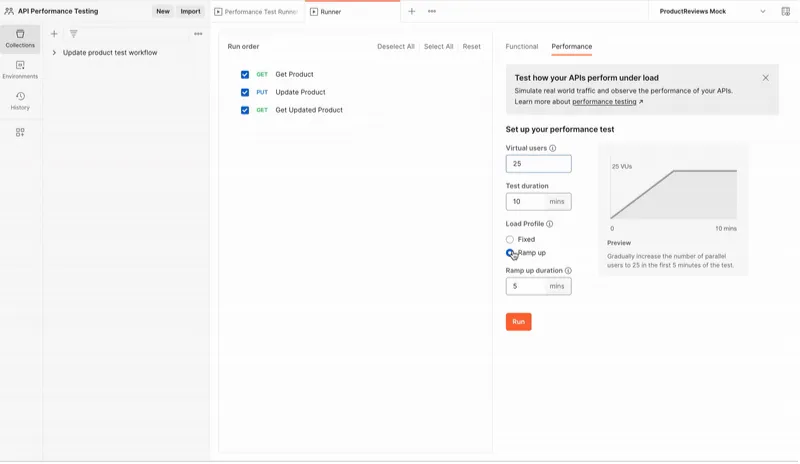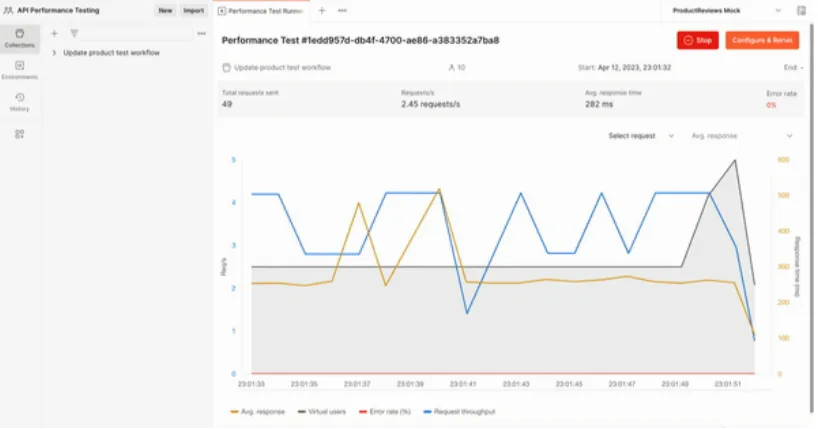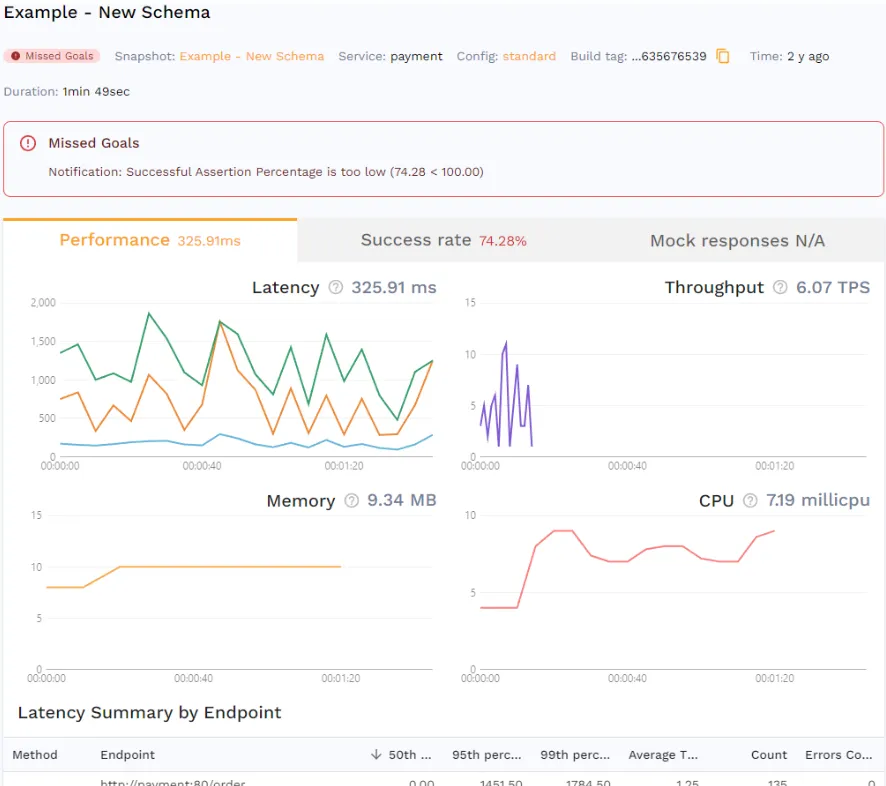Navigating the complex terrain of modern software applications and rising user expectations, selecting the right tools to ensure peak API performance has become crucial. In the area of API performance testing, comparing Speedscale vs Postman provides unique insights into what benefits you’ll get from different approaches.
With a Kubernetes-centric approach, Speedscale focuses on reproducing production traffic, automating mocks, and facilitating continuous performance testing. Conversely, Postman offers real-time insights during development, simplifying local API testing.
This post will highlight the unique strengths of both Speedscale and Postman, and their potential when combined, to equip you with strategies to combine Postman’s immediate local development insights and Speedscale’s real-world testing capabilities, creating a solid foundation for high-quality resilient API performance.
Postman: Real-Time Insights Enhancing Development
Efficiency and optimization are key when dealing with local development, and this is where Postman makes a substantial difference. As a user-friendly API client tool, Postman offers real-time insights during development, streamlining the process of building and testing APIs.
With Postman, developers can quickly send requests and receive responses, quickly evaluating the functionality of an API. Combining this with Postman’s scripting capabilities, developers can write pre-request and test scripts in JavaScript, executing logic before sending a request or after receiving a response—scripts like this enhance the data available for debugging and optimization.
To further help optimize the local development workflow, Postman comes with a number of useful features.
Performance Testing
Though Postman has long been a viable option for load testing, a new feature within the tool was recently released to further enhance the performance testing capabilities. As demonstrated in the launch blog post, the Collection Runner now has a “performance” tab where you can define a number of virtual users, the duration of the test, and define ramp patterns.

Upon running the test, you’ll see key performance metrics like throughput and response times happening in real-time.

This is a very powerful feature for local development, and is likely to help many developers quickly get an idea of what their API is capable of. However, given Postman’s architecture and the focus on local development, there are still some key limitations to consider. More on that in the comparison section later.
Variable Scoping
Another essential feature of Postman is the possibility of global, collection, and environment scopes, allowing developers to fine-tune their tests and requests to suit various contexts, significantly improving the efficiency and precision of the testing process.
Automated API Documentation
Automated generation of API documentation simplifies the process of comprehending an API’s functionality and ensuring consistent, up-to-date documentation across teams. Depending on the size of your organization this can be essential, like when you’re simultaneously developing a frontend and backend based on an API contract.
Postman Collections
Collections group related requests, enabling developers to run them sequentially to simulate realistic user scenarios. Environments aid in switching between different variable sets, making it easier to navigate various stages of development.
CLI Tools
Postman provides two distinct CLI tools to interact with: Newman and Postman CLI. Both tools allow developers to run and test a Postman collection directly from the command line, which is invaluable in build systems, continuous integration servers, and deployment pipelines where installing a desktop application may not be possible.
The major difference between the two options is that Newman was the first CLI tool developed and offered by Postman, whereas Postman CLI is a newer version. Also, Newman is open-source while Postman CLI is closed-source.
In conclusion, Postman’s real-time insights and comprehensive features make it an indispensable tool for local development. It empowers developers to swiftly pinpoint potential issues, optimize performance, and accelerate their API development and testing processes.
If you’re working in Kubernetes specifically you may find some useful features missing in Postman, like the ability to issue transactions directly into the cluster—pod-to-pod—for containerized applications. In those scenarios, you may wish to compliment Postman with another tool; like Speedscale.
Speedscale: Real-World Insights During Testing
Speedscale delivers unique capabilities designed specifically for Kubernetes-centric environments. Embracing the DevOps mindset, Speedscale highlights continuous and realistic testing, aiming to seamlessly incorporate performance testing in the software development lifecycle.
The integration of this tool will lead to performance considerations becoming an ongoing aspect of development, fostering both efficiency and reliability. This comes as the result of some key features.
Scalability and Resilience
Speedscale’s continuous load testing feature allows you to assess how your applications respond to increased user loads, preparing you to deliver stable, scalable services. The use of production traffic replication makes for a flexible load testing feature, capable of aiding you in various cases from isolating memory leaks to determining your API’s maximum throughput.
Automated Automations
Automated capabilities further underscore Speedscale’s value. The ability to auto-generate mocks using actual traffic data amplifies testing efficiency and precision. This same feature makes it viable to integrate performance testing into even regular pull requests, whereas non-functional testing is often reserved for big releases.
Perhaps most importantly, auto-generated mocks are a default setting when using Speedscale, and it’s likely you won’t even notice that mocks are being used. In fact, the interactive demo is entirely based on Speedscale’s mocks. Moreover, because traffic replays can be triggered via Kubernetes annotations, it’s possible to even automate your automations.
Benchmarking Performance
Speedscale’s performance benchmarking capability enables teams to monitor improvements or setbacks over time, making the evaluation of changes and optimizations a straightforward process. Benchmark results can either be retrieved with a speedctl get report [report_id] command, or by looking at the report in the WebUI.

Well-Suited for Microservices
Speedscale is purpose-built to support microservices architectures, as is evident by not just the Kubernetes-centric approach, but also the wide array of supported backend technologies supported for automatic mocking.
A Commitment to Compliance
Speedscale’s commitment to safeguarding Personally Identifiable Information (PII) during testing makes it a reliable partner in upholding privacy regulations like GDPR. Part of the compliance commitment is present in the Data Loss Prevention (DLP) feature which will scrub any sensitive information before leaving the cluster.
Traffic transformations
A standout feature of Speedscale is its ability to perform traffic transformations, offering you the opportunity to modify specific elements of your captured traffic. This flexibility allows you to create customized testing scenarios that better reflect your real-world needs, albeit still deeply rooted in your actual production environment.
For example, this allows you to replace auth tokens and update timestamps during traffic replays, preventing the use of real user tokens and making it possible to even validate token expiration.
To summarize, Speedscale’s approach offers a detailed, real-world view of application performance, empowering teams to make >continuous performance testing plays a major role in simplifying and saving cost on your testing, as well as creating the possibility of [great support for mocks](https://speedscale.com/blog/>Speedscale integrates with a variety of tools, including Postman. After recording traffic from your production cluster it can be exported to a Postman collection, letting developers benefit from the real-time feedback of Postman, while the real-world foundation of the collection ensuring confidence in the accuracy of said feedback.
Conversely, it’s also possible to import Postman collections, which is useful when developing a feature for which no real traffic exists—like a new API endpoint—but you still want to use Speedscale’s load generator. As mentioned earlier, Postman’s load generation is great but has limitations:
- Requires manual deployment of test instance: Truly accurate performance insights isn’t possible without the surrounding environment replicating production.
- Advanced features are missing: Simply defining a set number of virtual users and a duration can provide a lot of useful insight, but only to an extent.
- Manual mock server creation: Although Postman has
It’s important to emphasize that the respective limitations are the result of each company’s focus: Postman is for optimized local development, Speedscale is for cloud-native apps and continuous resiliency testing. That said, they’re still limitations to be aware of, and possibly mitigate with the combined usage of both tools.
Another way of utilizing the export/import functionality could be for Speedscale to act as your single source of truth, with helper scripts periodically downloading snapshots as Postman collections, ensuring that developers are always using up-to-date traffic when testing locally.
The Rewards of Integrated Testing
Merging Speedscale and Postman can redefine your testing workflow. It replaces script-driven tests with dynamic, >CI/CD pipeline, ensuring your applications are continuously tested against the most recent production traffic. This also creates an ideal environment for an efficient reproduction and investigation of errors to make your testing more effective.
In short, fusing the capabilities of Postman and Speedscale significantly elevates your testing process, promoting a shift-left testing approach that integrates testing early in the development lifecycle.
Performance Testing for Modern Workloads
Performance testing is essential, especially with the advent of complex software architectures like microservices. Traditional performance testing methods often fall short when managing these modern workloads, leading to a gap between testing and production realities.
This is where tools like Speedscale and Postman shine. Speedscale, focusing on Kubernetes environments and real-world traffic replication, provides a testing environment that closely mirrors production, dramatically reducing the risk of unexpected performance issues in production.
Conversely, Postman enhances agile development with real-time insights. It fast-tracks the development process by delivering immediate feedback, enabling efficient API testing, debugging, and optimization. This quick feedback loop equips developers to construct more stable services, thereby reducing time to market.
Furthermore, integrating Speedscale and Postman can foster collaboration within development teams. Shared Postman collections or Speedscale snapshots improve communication, while automated test execution reduces manual effort and boosts consistency.
Finally, the use of these advanced tools contributes to skill development within the team. As teams grow more adept at using these tools, they’re better equipped to manage the complexities of modern software architectures.